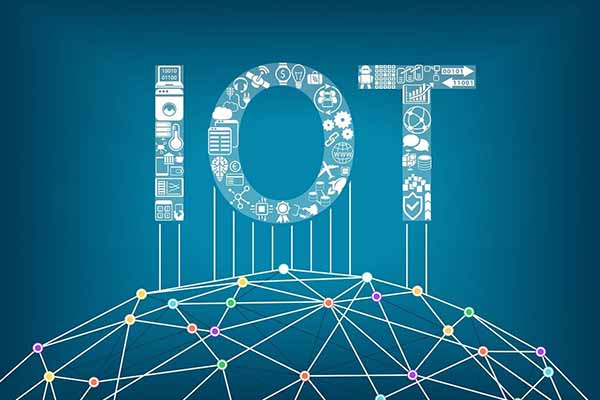The Internet of Things (IoT) is the wave of the future. It is reshaping all industries and making the world system more efficient. A global assessment predicts that by 2025, the Indian IoT industry is anticipated to generate USD 9.28 billion. In 2023, it’s predicted that with shifting market dynamics and continuous innovation, there will be more than 43 billion devices connected to the internet. They will generate, share, collect, and assist us to make use of data in different ways. Here is an overview of some of the key trends that will affect how we use and interact with these devices.
1. AIoT
Artificial Intelligence (AI) and the Internet of Things are two technologies that complement each another effectively. As AI continues to shine currently, its convergence with IoT makes it capable of solving a range of problems. IoT devices produce a huge amount of data, and AI, a technology that is driven by data, performs best when given a lot of data. It is expected that AI will exploit the data that IoT devices send in real-time to hone its machine-learning capabilities. Further, to calibrate more efficient algorithms. Deeper AIoT corporate integration will result in beneficial solutions. Utilizing analytics-enabled decision-making processes, this technology will optimise system and network operations and extract worthwhile insights from industrial data. As per reports, by 2028 the global market for artificially intelligent things (AIoT) is anticipated to be worth USD 144.07 billion. Further, it will expand at a CAGR of 38.1%.
2. IoT in Healthcare
The digital healthcare market in India was estimated to be worth INR 116.61 billion in 2018. It is projected to reach INR 485.43 billion in 2024, growing at a CAGR of 27.41%. The telehealth sector will be further enhanced. Further, the market growth will be improved in 2023 due to advancements in communication technology and the introduction of 5G networks.
The adoption of automated medicine dosage, intelligent wearables, monitoring devices and IoT-connected diagnostic supplies will continue to skyrocket. One of the technological shifts will be the ability of healthcare practitioners to keep a check on patients’ health away from the hospital or doctor’s office. This will ensure round-the-clock treatment and enable resources for patients who require emergency assistance.
The introduction and gradual upgradation of wearable technology will assist everyone to understand their health better. Further, it will relieve the burden on the current healthcare system. We expect this year to witness a lot of wearable skin patches with several other smartwatches well equipped with heart rate and oxygen level monitoring sensors.
3. Governance in the IoT Space
Security and IoT have a complex relationship. IoT gadgets expose us to numerous types of cyberattacks while also making our regular tasks more convenient. The risk of cybersecurity assaults will rise along with the quantity of IoT devices in 2023. These complexities stem from the diverse and distributed nature of the technology.
We anticipate a refocused interest in security in the Internet of Things technology sector as more complex safety problems develop. Unfortunately, the connected system’s security still has to be strengthened. There is a huge market potential for IT and cybersecurity firms to create cutting-edge AI-based security solutions to guard against data breaches. This is due to the enormous amounts of data created by IoT devices.
4. Development of Smart Cities
Smart cities will further develop as a result of IoT adoption. Smart cities don’t just prioritise improving people’s quality of life, but the social, environmental, and financial facets of urban living. It will also play a significant role in enhancing sustainability and quality of life as urban populations rise.
IoT devices collect and analyse data to improve infrastructure, public utilities, and services. The administration and supervision of traffic have always been a challenge, even in the majority of industrialised nations. To better manage and optimise traffic, IoT sensors will track and analyse traffic across crossings.
5. IoT in Manufacturing
In an industrial setting, IoT delivers higher performance, efficiency, a safe working environment, and cheaper expenses. IoT will continue to assist profitable automated sectors in the future. Autonomous machines will take the place of manual processes in the industry due to enterprise software built on IoT. Error prevention, sophisticated analytics, and effective monitoring, as well as the stages of product creation and testing, are further uses of IoT devices in industrial settings.
According to a NASSCOM report, more than two-thirds of Indian manufacturers would embrace digital transformation by 2025 to grow India’s manufacturing GDP to 25%. As IoT and wearables link management to industrial floors and mobile devices can link to wearables, there will be a possibility to receive feedback, improve time management and increase safety.
In the upcoming years, IoT will be used in more sophisticated ways as the invention grows and more people begin to compete, making it essential to our society and the technology of the future. Moreover, service providers will enter the IT and web-level sectors making new sources of revenues as IoT platforms will develop with enhanced bandwidth and AI. Further, with businesses and government bodies developing Digital India Program with an aim to transform India into a digitally empowered society and boost the IoT industry, the data-based productivity and value will only strengthen in 2023.
About the author:

Dr. Rishi Bhatnagar is the President at Aeris Communications.















